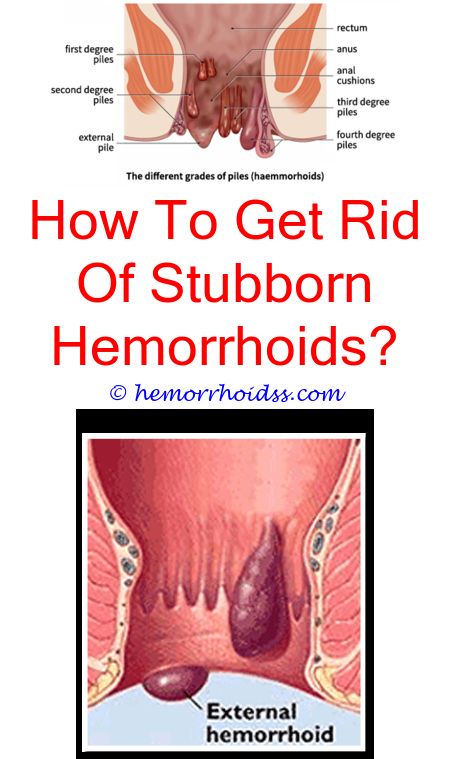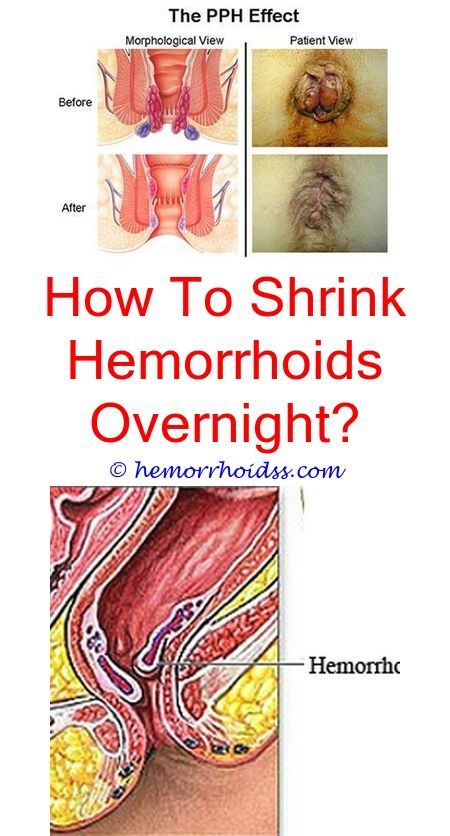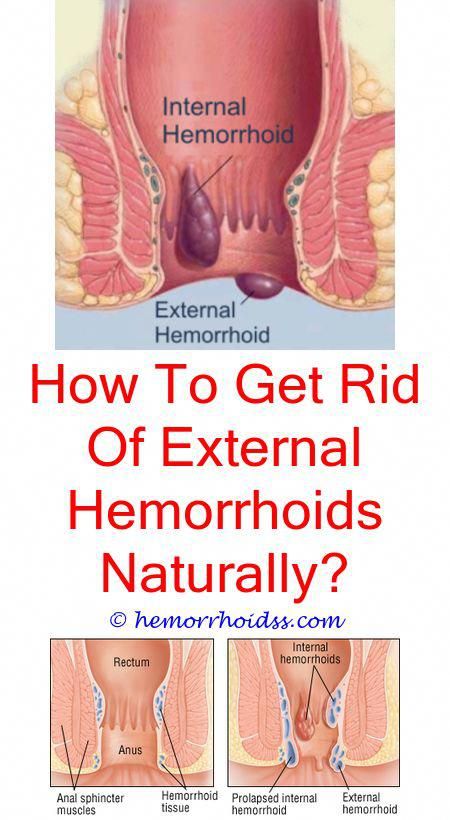Apple Cider Vinegar On External Hemorrhoids Does It Work
Apple Cider Vinegar has been known to relieve the symptoms of external hemorrhoids. A topical solution of apple cider vinegar can reduce the symptoms in a few weeks. When applied to the affected area two or three times a day, it can temporarily reduce the symptoms of swelling and irritation.
It should be noted apple cider vinegar is not a solution and will only provide temporary relief. Be careful as well! Apple cider vinegar can burn very bad and be harmful if too much is applied or it is ingested. Do not use if you haven’t spoken with your doctor.
What Should You Know About Hemorrhoids
What are hemorrhoids?
Hemorrhoids are blood vessels located in the smooth muscles of the walls of the rectum and anus. They are a normal part of the anatomy and are located at the junction where small arteries merge into veins. They are cushioned by smooth muscles and connective tissue and are classified by where they are located in relationship to the pectinate line, the dividing point between the upper 2/3 and lower 1/3 of the anus. This is an important anatomic distinction because of the type of cells that line hemorrhoid, and the nerves that provide sensation.
What are the internal and external hemorrhoids?
Internal hemorrhoids are located above the pectinate line and are covered with cells that are the same as those that line the rest of the intestines. External hemorrhoids arise below the line and are covered with cells that resemble skin.
What are the symptoms of hemorrhoids?
Hemorrhoids become an issue only when they begin to swell, causing itching, pain, and/or bleeding.
Why Do Hemorrhoids Hurt
Harvard Health reports that hemorrhoids can be a recurrent and painful intrusions. While internal hemorrhoids are often associated with little to no symptoms, external hemorrhoids are frequently reported to be accompanied by pain.
According to Colorectal Surgeon and the Chief of Surgery at Mercy Suburban Hopsital in East Norriton, PA, Christopher J. Bruce, M.D., external hemorrhoids have a rich nerve supply.
It is the rich pain-sensing nerve presence that causes the painful swelling associated with hemorrhoids.
Internal hemorrhoids that become prolapsed protrude out of the anus. Prolapsed hemorrhoids are considered stage IV internal hemorrhoids.
Prolapsed hemorrhoids can become strangulated or turn into blood clots known as thrombosis. The inflammation of prolapsed hemorrhoids causes added pressure on the anal area which causes these hemorrhoids to hurt.
When a hemorrhoid becomes strangulated, the blood supply is blocked and can cause pain in the anal sphincter.
Recommended Reading: Hemorrhoids Rash Treatment
Warm Bath With Epsom Salt
Warm baths can help soothe irritation from hemorrhoids. Try using a sitz bath a small plastic tub that fits over a toilet seat so you can just immerse the affected area or take a bath in a tub, if you can.
Try a warm bath or a sitz bath for 20 minutes after each bowel movement. Adding Epsom salt to the bath can provide further relief by reducing pain.
Dietary Changes And Self Care

If constipation is thought to be the cause of your haemorrhoids, you need to keep your stools soft and regular, so that you don’t strain when passing stools.
You can do this by increasing the amount of fibre in your diet. Good sources of fibre include wholegrain bread, cereal, fruit and vegetables.
You should also drink plenty of water and avoid caffeine .
When going to the toilet, you should:
- avoid straining to pass stools, because it may make your haemorrhoids worse
- use moist toilet paper, rather than dry toilet paper, or baby wipes to clean your bottom after passing a stool
- pat the area around your bottom, rather than rubbing it
Read more about preventing constipation.
Read Also: Hemorrhoid Rash Treatment
What Are The Types Of Hemorrhoids
Hemorrhoids can happen inside or outside the rectum. The type depends on where the swollen vein develops. Types include:
- External: Swollen veins form underneath the skin around the anus. Your anus is the canal where poop comes out. External hemorrhoids can be itchy and painful. Occasionally, they bleed. Sometimes they fill with blood that can clot. This is not dangerous, but can result in pain and swelling.
- Internal: Swollen veins form inside the rectum. Your rectum is the part of the digestive system that connects the colon to the anus. Internal hemorrhoids may bleed, but they usually arent painful.
- Prolapsed: Both internal and external hemorrhoids can prolapse, meaning they stretch and bulge outside of the anus. These hemorrhoids may bleed or cause pain.
How Do I Know If I Have External Hemorrhoids
Depending on the severity of your external hemorrhoids, symptoms are more obvious than that of internal hemorrhoids.
If you have hemorrhoid itching and burning, or pain around the anus, lumps near the anus, or blood in your stool, these are indications that you may have external hemorrhoids.
Another sign of external hemorrhoids is a feeling of pressure on the bowel. If you suspect you have external hemorrhoids, a hemorrhoid doctor can perform a rectal exam to verify your diagnosis.
If you have internal hemorrhoids, check out our internal hemorrhoids guide for more information.
Recommended Reading: Ice Cube For Hemorrhoids
Causes And Risk Factors
The underlying cause of hemorrhoids that form in the anus or rectum is still a matter of debate. One theory is that it is due to the breakdown of the supporting tissues in the anal canal.
When hemorrhoids are untreated, last for a long time, or are under more physical pressure, they can become prolapsed and protrude out of the anus or rectum.
There are several risk factors for prolapsed hemorrhoids, including:
- Advanced age
- Overuse of anti-diarrhea medications
- Pregnancy
Sometimes, placing something in the anus, such as during sexual activity, or for medical treatment, can also cause pressure, resulting in a prolapsed hemorrhoid.
Can External Hemorrhoids Cause Constipation
While external hemorrhoids do not cause constipation, they can add to it.
More severe external hemorrhoids can cause an obstruction as you try to pass a bowel movement.
This can make it difficult for stool to pass through your rectum and anus. Constipation is more often than not a cause of hemorrhoids, not the other way around.
Recommended Reading: How To Fix Hemorrhoids After Pregnancy
Hemorrhoids: Diagnosis And Treatment Options
TIMOTHY MOTT, MD, Naval Hospital Pensacola, Pensacola, Florida
KELLY LATIMER, MD, MPH, U.S. Naval Hospital Sigonella, Catania, Italy
CHAD EDWARDS, MD, Hamilton Medical Center, Dalton, Georgia
Am Fam Physician. 2018 Feb 1 97:172-179.
Patient information: A handout on hemorrhoids is available.
Hemorrhoids develop when the venous drainage of the anus is altered, causing the venous plexus and connecting tissue to dilate, creating an outgrowth of anal mucosa from the rectal wall. However, the exact pathophysiology is unknown. Hemorrhoids occur above or below the dentate line where the proximal columnar transitions to the distal squamous epithelium . The anus is approximately 4 cm long in adults, with the dentate line located roughly at the midpoint.2 Hemorrhoids developing above the dentate line are internal. They are painless because they are viscerally innervated. External hemorrhoids develop below the dentate line and can become painful when swollen. The extent of prolapse of internal hemorrhoids can be graded on a scale from I to IV, which guides effective treatment . This grading system is incomplete, however, because it focuses exclusively on the extent of prolapse and does not consider other clinical factors, such as size and number of hemorrhoids, amount of pain and bleeding, and patient comorbidities and preferences.3
SORT: KEY RECOMMENDATIONS FOR PRACTICE
Increasing fiber intake is an effective first-line, non-surgical treatment for hemorrhoids.
FIGURE 1.
What Is Stapled Hemrroidectomy
The following are pictures of the stapled hemorrhoidectomy procedure.
- Picture of Hollow Tube Inserted into the Anal Canal and Pushing up the Hemorrhoids
- Picture of Internal Hemorrhoids in Anal Canal
- Picture of Suturing the Anal Canal Through the Hollow Tube
- Picture of Bringing Expanded Hemorrhoidal Supporting Tissue into the Hollow Tube by Pulling on Suture
- Picture of Hemorrhoids Pulled Back Above Anal Canal After Stapling and Removal of Hemorrhoidal Supporting Tissue
Also Check: Does Emuaid Work For Hemorrhoids
Can Hemorrhoids Be Prevented Or Avoided
Just about everyone has hemorrhoids at some time. But some things may make you more likely to get them. People whose parents had hemorrhoids may be more likely to get them. Pregnant women often get hemorrhoids because of the strain from carrying the baby and from giving birth. Being very overweight or standing or lifting too much can make hemorrhoids worse.
What Are The Causes Or Risk Factors Of Hemorrhoids

Hemorrhoids can occur at any age, but they appear more frequently between the ages of 45 and 65. In younger people, they mostly occur in pregnant women or those who have just given birth. More than 50% of North Americans have or have had hemorrhoids.
The exact cause is not known, but there are several contributing factors to their onset. Therefore, you are more at risk of suffering from hemorrhoids if:
- you are constipated or strain when passing stool
- your diet lacks fibre
- you are pregnant or have given birth
- you frequently lift heavy loads
- you remain seated for long periods
- you are obese
Don’t Miss: How To Get Rid Of Hemorrhoids After Giving Birth
Top Signs Of A Thrombosed Hemorrhoid
Hemorrhoids are a common condition that affect millions of Americans on a daily basis, according to the American Society of Colon & Rectal Surgeons. If youre like most, you may suffer with your hemorrhoids longer than necessary before seeking medical help.
Though hemorrhoid symptoms vary and may even be mild enough for you to ignore, its hard to suffer through the symptoms of a thrombosed hemorrhoid, which is an external hemorrhoid thats developed a blood clot.
At Midwest Hemorrhoid Treatment Center in St. Louis, Missouri, our board-certified family physician Dr. Betsy Clemens has extensive experience diagnosing and treating thrombosed hemorrhoids. To limit the number of days you spend suffering in pain, we want to share the top signs of a thrombosed hemorrhoid.
Are Hemorrhoids Different During Pregnancy
No one likes to talk about them, but hemorrhoids are a fact of life for many people, especially during pregnancy. Hemorrhoids are simply veins inside or outside of your anus that have become large and swollen.
Also called piles, they can look like varicose veins when outside your body. Hemorrhoids develop frequently during pregnancy, especially in the third trimester and during and shortly after childbirth.
You may have hemorrhoids only during pregnancy, or you may have them at other times of your life as well.
The causes of your hemorrhoids may be unique to pregnancy. You can often treat or prevent hemorrhoids with home-based remedies and lifestyle adjustments.
There are two types of hemorrhoids:
- internal hemorrhoids, which are inside of your body
- external hemorrhoids, which are outside of your body
Your symptoms may vary depending on which type you have.
hemorrhoid symptoms during pregnancy
- burning
- swelling
Generally, you will experience these symptoms with external hemorrhoids. You may have no symptoms with internal hemorrhoids.
You may also develop a blood clot in an external hemorrhoid. This is known as a thrombosed hemorrhoid. They are generally hard, inflamed, and more painful.
Its possible to push out an internal hemorrhoid when having a bowel movement. If this occurs, you may experience bleeding and discomfort.
Up to 50 percent of women develop hemorrhoids during pregnancy.
Recommended Reading: How To Treat Hemorrhoids After Giving Birth
How Do You Shrink External Hemorrhoids
There are many methods you can employ to shrink external hemorrhoids. To start, you can use topical based treatments, like Preparation H, hemorrhoid wipes with calming, anti-inflammatory ingredients, or natural extracts like coconut oil or aloe vera.
Applying these creams, ointments, or extracts directly to your external hemorrhoids can encourage them to shrink faster.
Sclerotherapy is another option for sufferers with constant flare-ups of external hemorrhoids.
Chronic external hemorrhoids are injected with a chemical compound that is designed to shrink them and help subside future flare-ups.
Your doctor can recommend additional non-operative or surgical treatment options to find which method is best for your hemorrhoid condition.
What Can I Do To Ease Hemorrhoid Pain
There are many ways to ease the pain of hemorrhoids.
At-home methods include over-the-counter pain medications, creams or wipes, sitz baths, and many lifestyle changes to prevent the worsening of your hemorrhoids.
If at-home treatments are not working, talk to your doctor about non-invasive treatments.
Rubber band ligation is a non-invasive procedure that involves placing one or two rubber bands on the internal hemorrhoids to cut off the circulation.
Injection or sclerotherapy involves the injection of a chemical solution to shrink the hemorrhoid tissue.
Coagulation is also an option. Lasers, infrared light, or heat can be used to harden and shrivel your hemorrhoids.
If all else fails, you can talk to your doctor about the surgical procedures to alleviate hemorrhoids.
Be careful when trying laser hemorrhoid surgery, as it can be very painful.
Read Also: How To Treat Hemorrhoids After Delivery
How Are External Hemorrhoids Diagnosed
To diagnose external hemorrhoids, a doctor will ask about your health history and symptoms. They will also likely do a physical exam.
In the case of external hemorrhoids, they will generally be able to see the hemorrhoids by examining the area around your anus.
They may also perform a digital rectum exam and anoscopy to check for issues inside your anal canal and rectum, including internal hemorrhoids.
During a digital rectal exam, your doctor will insert their gloved, lubricated finger into your anus. Theyll be able to feel abnormalities inside.
During an anoscopy, the doctor will insert a device called an anoscope into your rectum that allows them to see abnormalities.
If you also have rectal bleeding, your doctor will likely request that you get a sigmoidoscopy or colonoscopy to rule out colorectal cancer. These methods will also detect any internal hemorrhoids.
Why Do Hemorrhoids Feel Like Crawling
Hemorrhoids can feel like crawling. It is very much normal. In several surveys and reports revealed from patients that in some cases while passing stool patients feel that something is crawling inside their anus and the stool is not completely passed.
Normally hemorrhoids can also feel like itching in many cases.Sometimes straining while using the bathroom pushes an internal hemorrhoid outside until it protrudes through the anus this condition is called prolapsed internal hemorrhoid.
When an internal hemorrhoid prolapses mucus secretes which can irritate sensitive areas around the anus which causes the itching. If the hemorrhoid stays prolapsed then the mucus production continues thus causing irritation and itching.
You May Like: Do Suppositories Help Heal Hemorrhoids
Also Check: What Do Internal Hemorrhoids Feel Like To Touch
Natural Remedies For Hemorrhoids
- By Matthew Solan, Executive Editor, Harvard Men’s Health Watch
Hemorrhoids are painful, unpleasant, and, um, well, difficult to talk about. But they actually are quite common: about half of people over age 50 have had them. However, theyre easy to treat and manage.
Hemorrhoids can be troublesome and embarrassing, but they often shrink on their own with simple self-help care and over-the-counter remedies, says Dr. Howard LeWine, assistant professor of medicine at Harvard Medical School.
Every Time You Go To The Bathroom

Read Also: Can You Donate Plasma While Pregnant
Also Check: Can Ice Cubes Help Hemorrhoids
Causes Of External Hemorrhoids
The most common cause of external hemorrhoids is repeated straining during a bowel movement, leading to the veins of the anus or rectum becoming dilated or enlarged. Because external hemorrhoids result from excessive pressure in the rectums veins, certain factors can increase the chances of external hemorrhoids forming.
Some of the most common external hemorrhoid causes include:
- Pregnancy.
- Heavy weight lifting.
- Obesity.
Each of the above places added pressure on the rectal veins, which may eventually cause increased swelling in the external hemorrhoids. For example, in pregnant women, the uterus puts extra pressure on these veins and can cause them to enlarge. To reduce the likelihood of developing external hemorrhoids or prevent symptoms from worsening, limit the amount of time you spend on the toilet to two minutes and make sure you always practice proper form when heavy lifting.
How To Get Rid Of Hemorrhoids: Diagnosis And Treatments
Most individuals who have hemorrhoids discover them by either
- feeling the lump of an external hemorrhoid when they wipe themselves after a bowel movement,
- noting drops of blood in the toilet bowl or on the toilet paper, or
- feeling a prolapsing hemorrhoid after bowel movements.
With a history of symptoms, a physician can begin diagnosis on the basis of a careful examination of the anus and anal area. Although the physician should try his or her best to identify the hemorrhoids, it is perhaps more important to exclude other causes of hemorrhoid-like symptoms that require different treatment such as
- anal fissures,
This is true whether or not hemorrhoids are found during anoscopy.
Don’t Miss: What Kind Of Doctor Fixes Hemorrhoids